Speaker
Description
In the study of atomic nuclei, nuclear charge radii provide intriguing physics insights into the evolution of nuclear structure far away from stability and pairing effects [1,2]. Furthermore, charge radii ,have been used as experimental input for the determination of V$_{ud}$ of the Cabibbo-Kobayashi-Maskawa (CKM) quark mixing matrix from superallowed nuclear $\beta$-decays [3]. In the Standard model of particle physics, the CKM matrix is predicted to be unitary but recent reviews of the matrix values [4] show $\approx2\sigma$ deviation for one of its unitarity tests, with the highest numerical contribution coming from $V_{ud}$. This contribution will present the recent work of combined measurements of the charge radii of $^{26,26m}$Al by means of Collinear Laser Spectroscopy (CLS) at the COLLAPS experiment at ISOLDE and at the IGISOL facility in Jyväskylä, Finland. CLS takes advantage of the interaction between the atomic nucleus and its surrounding electrons giving rise to the hyperfine structure. Thus, properties of nuclear ground states and long-lived isomers, including nuclear charge radii, can be inferred from measured hyperfine spectra. Prior to the present work, the charge radius of the superallowed $\beta$ emitter $^{26m}$Al was not known experimentally but had to be extrapolated from known nuclear charge radii to evaluate the theoretical isospin symmetry breaking (ISB) correction required for the determination of V$_{ud}$. The present measurements reveal a charge radius of $^{26m}$Al which differs by more than 4 standard deviations from the value assumed in previous ISB calculations. Consequently, this affects the corrected $\mathcal{F}$t value of $^{26m}$Al -- important for the estimation of V$_{ud}$ in the CKM matrix -- which is shifted by one standard deviation to \qty{3071.4\pm1.0}{\second}. References [1] M. Bissell et al., Physical Review Letters 2014, 113, 052502. [2] A. Koszorus et al., Physics Letters B 2021, 819, DOI 10.1016/j.physletb.2021.136439. [3] J. C. Hardy, I. S. Towner, Physical Review C 2020, 102, DOI 10.1103/PhysRevC.102.045501. [4] R.L. Workman et al. (Particle Data Group), Prog. Theor. Exp. Phys. 2022, 083C01 (2022) and 2023 update

